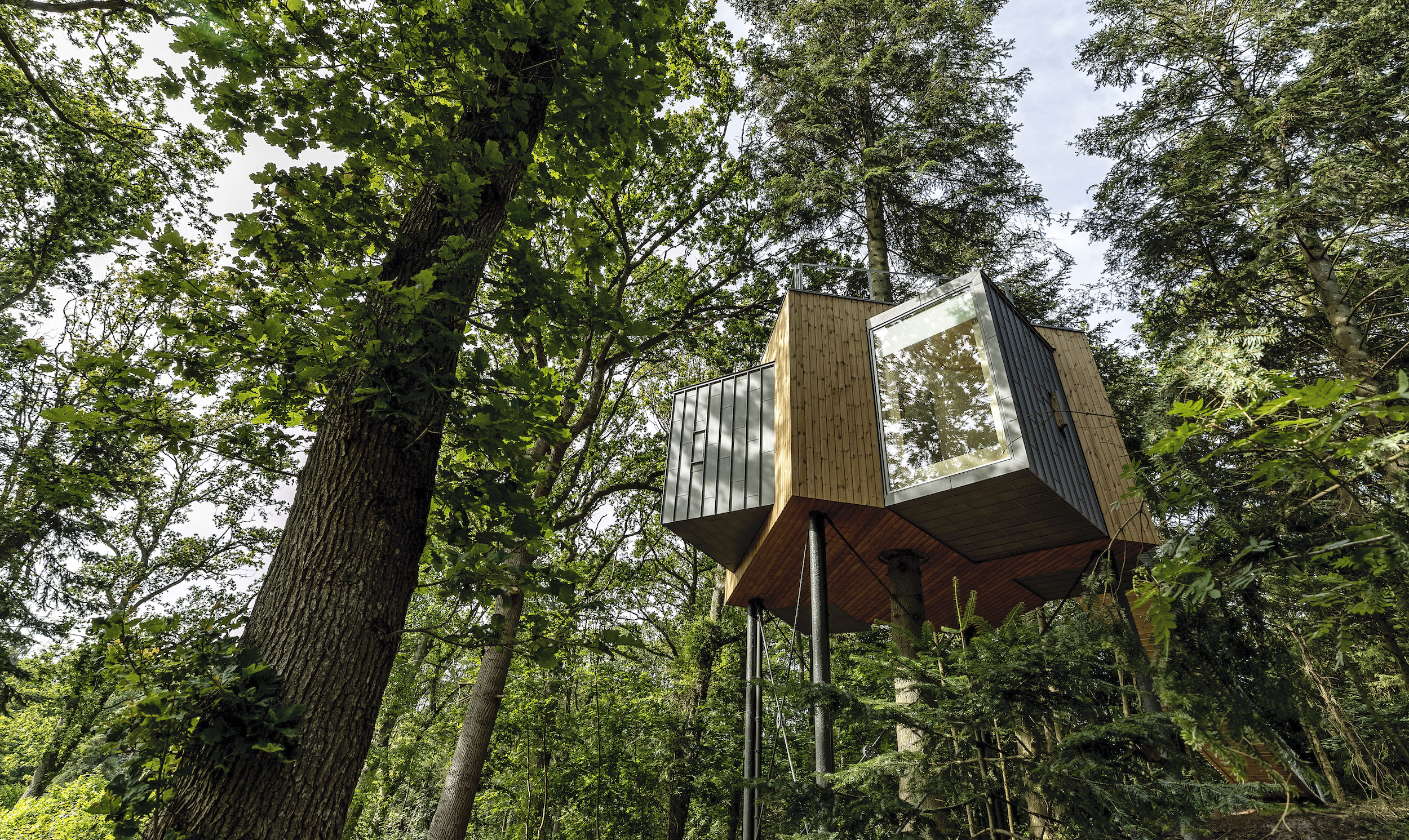A new breed of remote hideaway is being created in the wilderness, harmonising beautiful design with extraordinary locations. As spring unfolds across the northern hemisphere, our Design Subcultures series discovers what’s hiding in the woods.
A stint living on the shores of Norway’s fjords gave Johnathon and Zoë Little a deep appreciation of the local aesthetic and environment. In short, they fell in love with the great outdoors.
On returning to the UK, the couple teamed up with architect Theo Dales to design and build modular cabins for the countryside that were informed by their Norwegian experience. Using their Koto Cabins as a base, people can “escape to nature” in comfort, says Zoë. “The average day in the modern world can often be distracting and chaotic, which leads people to crave connection with the natural world.”

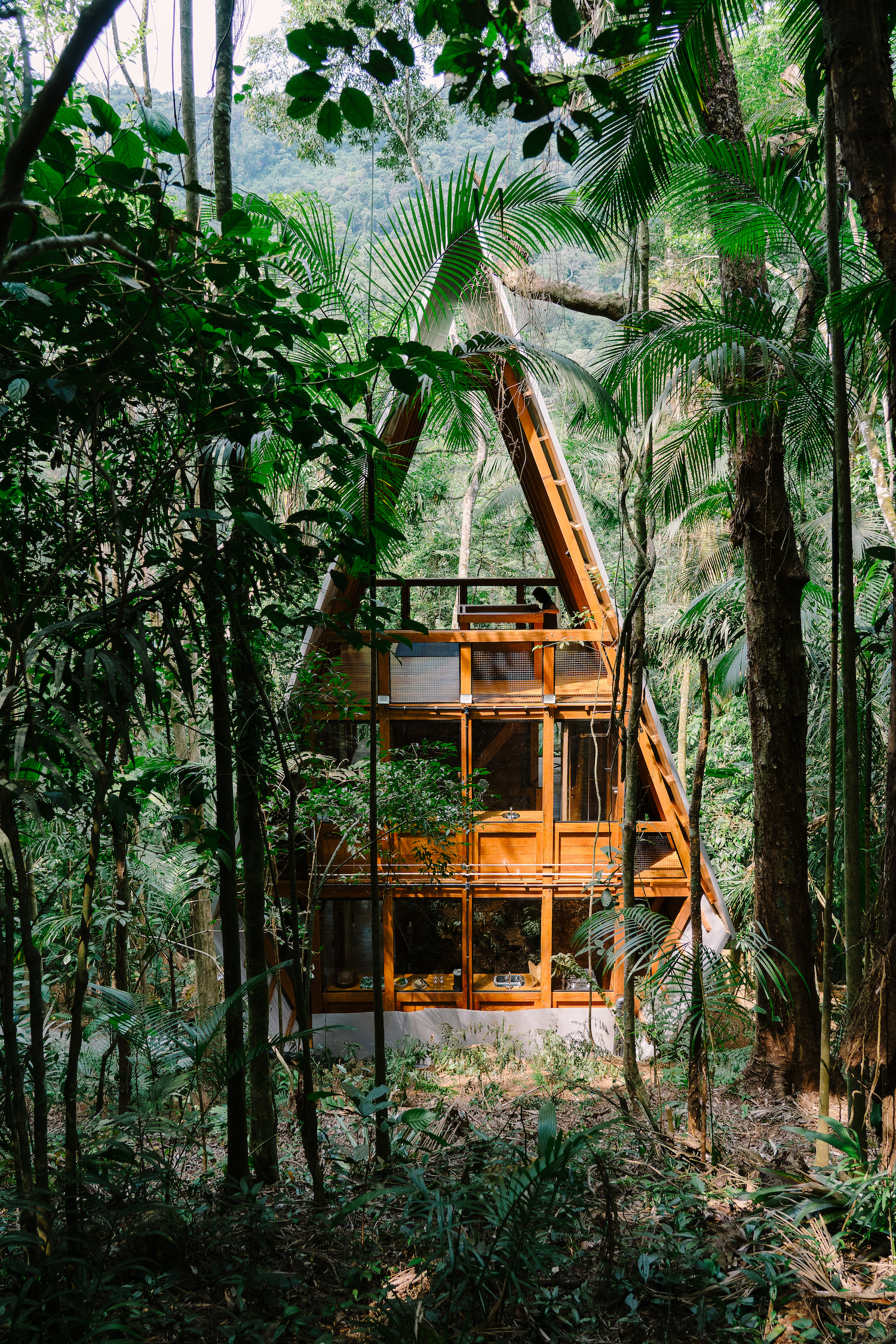
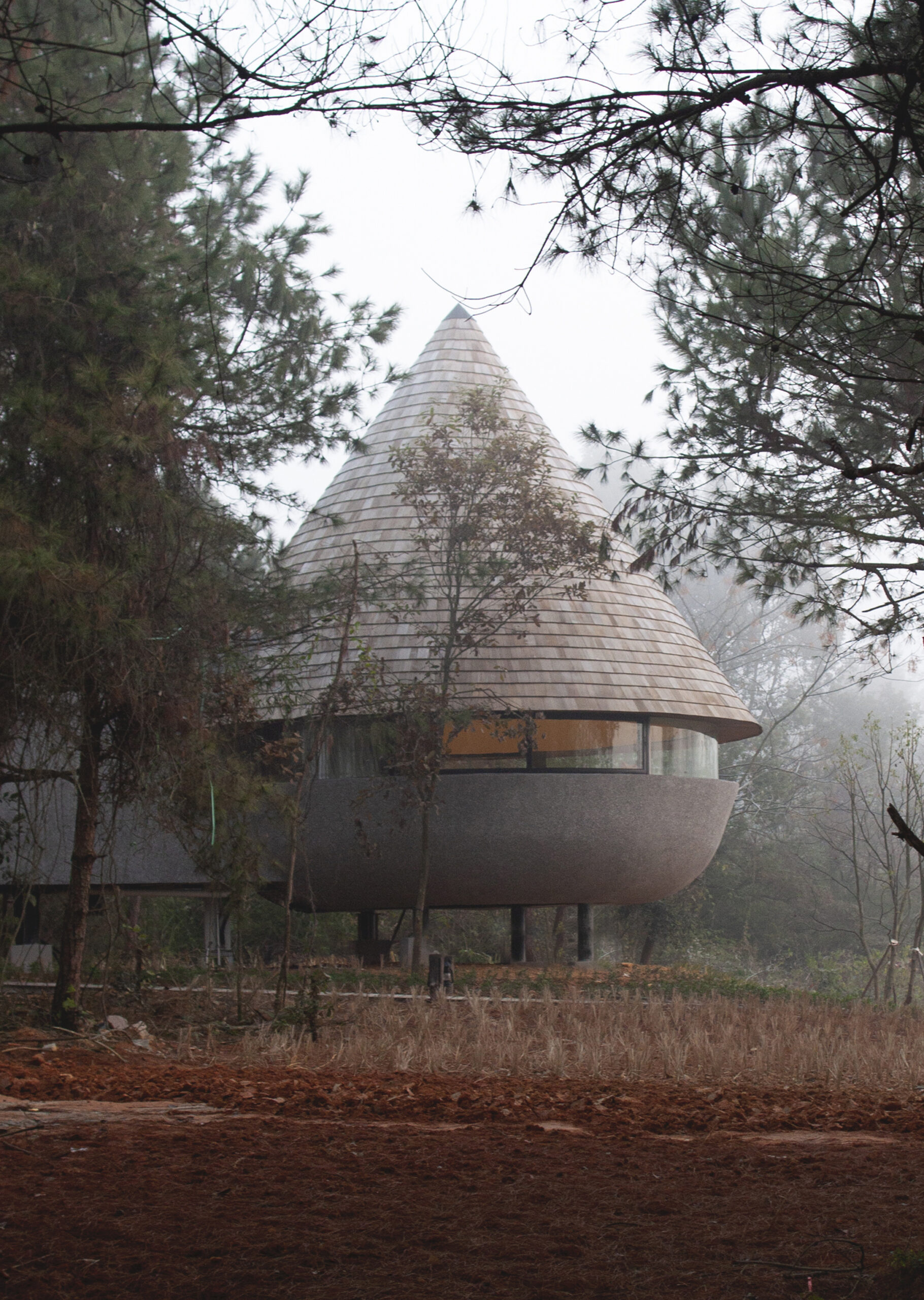
(Photo: Adam Letch); Monkey House by Atelier Marko Brajovic in Brazil (Photo courtesy of Atelier Marko Brajovic); The Mushroom by ZJJZ Atelier in Jiangxi, China (Photo: Fangfang Tian). all courtesy of Cabin Fever, gestalten
The trio’s Koto Cabins share aspirations and an aesthetic with a growing number of remote, thoughtfully-designed retreats that are cropping up around the world.
What is essential in our lives is a delicate balance between the pleasure possessions give us and the pleasure of freeing ourselves from them.
Jonas Bjerre-Poulsen, Norm Architects
Scandinavia and the Nordic regions are the setting for many of the latest generation of retreats. Deep in a Swedish pine forest, Danish firm Norm Architects have remodelled a ‘rustic yet refined’ holiday home, and equipped it only with the necessities for slow living. In Finland, Studio Puisto has created Niliaitta, tourist cabins raised dramatically on a single pillar.
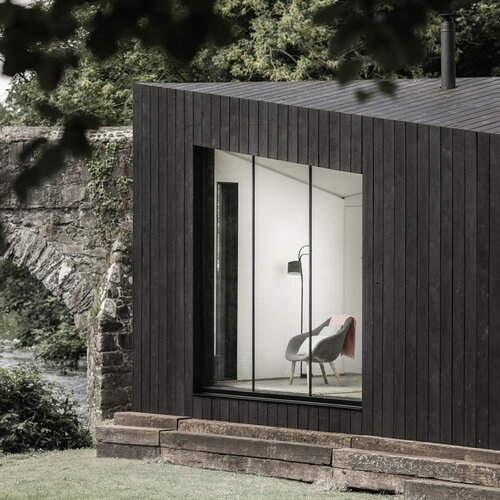
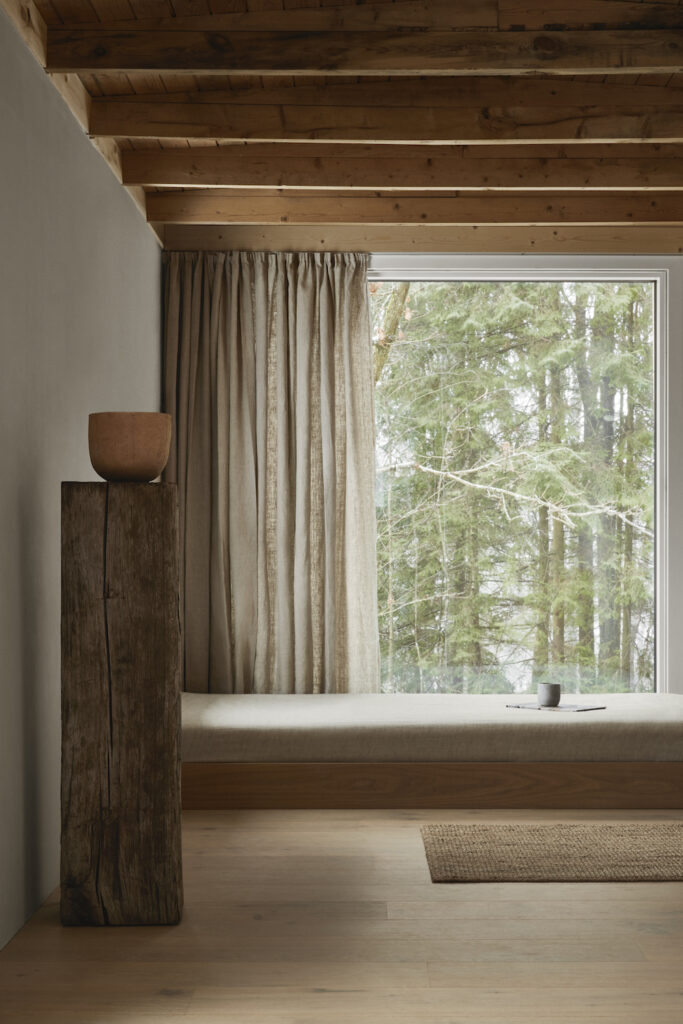
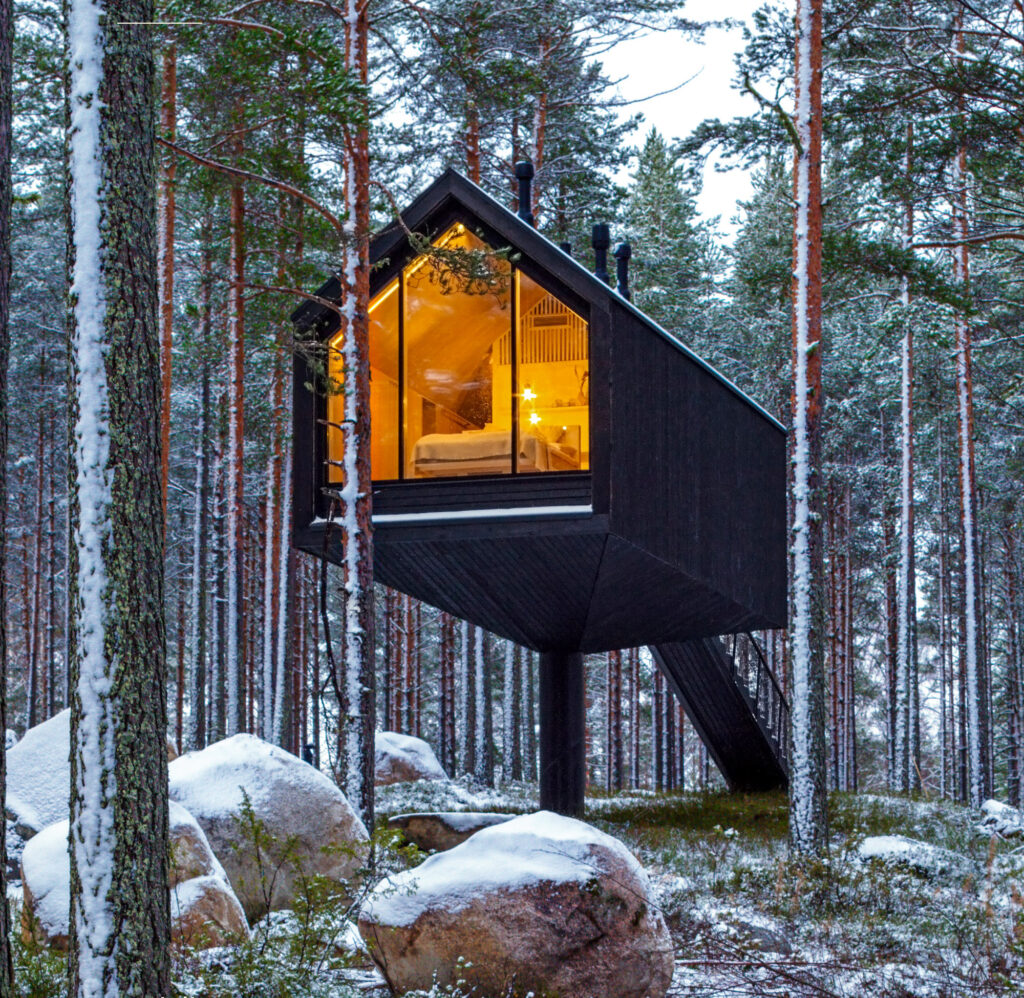
Perhaps the creativity in this region is not surprising, given Europe’s deep cabin culture roots. From the Scottish Highlands to the Alpine and Nordic regions, the first cabin structures began to appear as early as 3500BCE, according to the book Cabin Fever by gestalten.
Some designers draw on this history. Archipelago House in Sweden, also by Norm, is inspired by traditional, local boathouses and fishing sheds.
Across the globe, the prevailing interior aesthetic borrows from the Nordic countries. “It is obvious that Scandinavian design had a huge influence worldwide,” says Robert Klanten, author of Cabin Fever.
Norm’s Swedish Forest Retreat displays some of these qualities. The interior material palette is kept as simple, natural, and as rustic as possible with oak flooring and fittings juxtaposed with dolomite plaster walls. And in the nearby Netherlands, Woonpioniers has created Indigo cabin, lining it with locally-sourced wood inside and out.
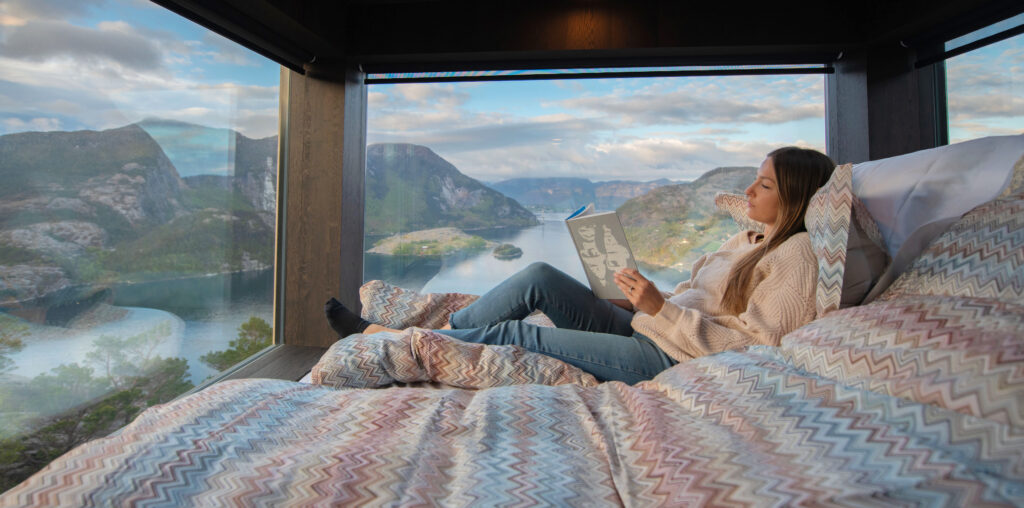
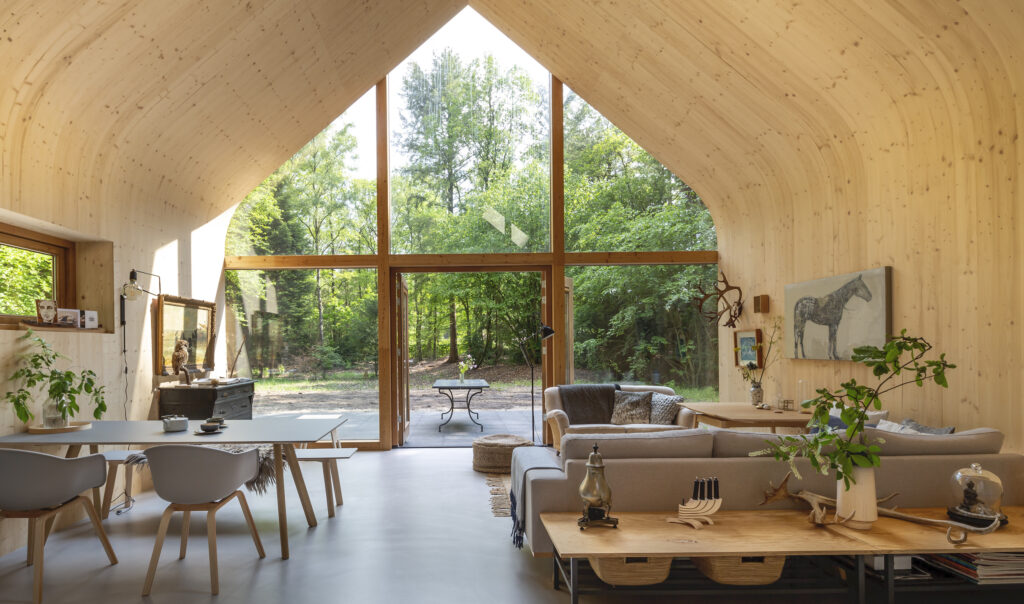
Meanwhile, Koto’s founders began looking further east to the minimalist world of Japanese design and its focus on social functionality. The combining of Scandinavian and Japanese aesthetics – physically distant but intellectually similar – became known as Japandi.
But don’t expect to see swathes of slavish Scandi pastiches beyond the region. Klanten notes that cabins in other places such as Latin America and Australia “are not sheer imitations of a Nordic design ethos but are eager to inject, reflect and celebrate local aesthetics and traditions”. Hence the more rough-and-ready rustic charm of Portugal’s Cabanas no Rio, and the polished concrete interior walls of Casa Etérea in Mexico. And even Scandi designs can buck the pale timber interiors trend. Swedes Sandellsandberg Arkitekter have daubed the ceilings of Synvillan in pastels.
Wherever they draw their inspiration, these designers need to combine beauty and comfort with the practicalities of a remote location. While modern life is full modern electrical and digital conveniences, many of these cabins are back-to-basics, often low-energy or completely off-grid. But comfort rarely suffers. Architects and interior designers are at pains to make the far-flung experience functional as well as stylish.
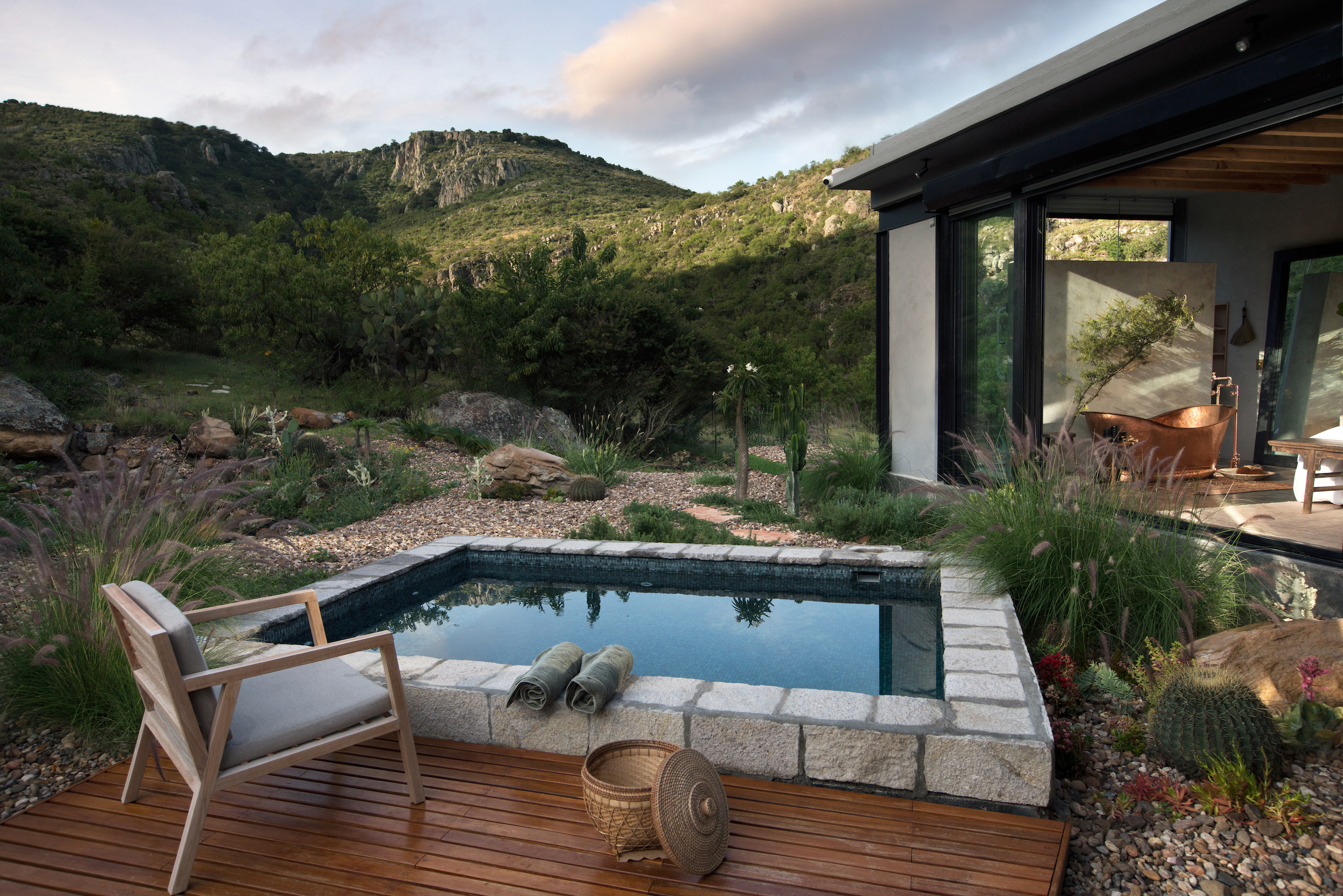
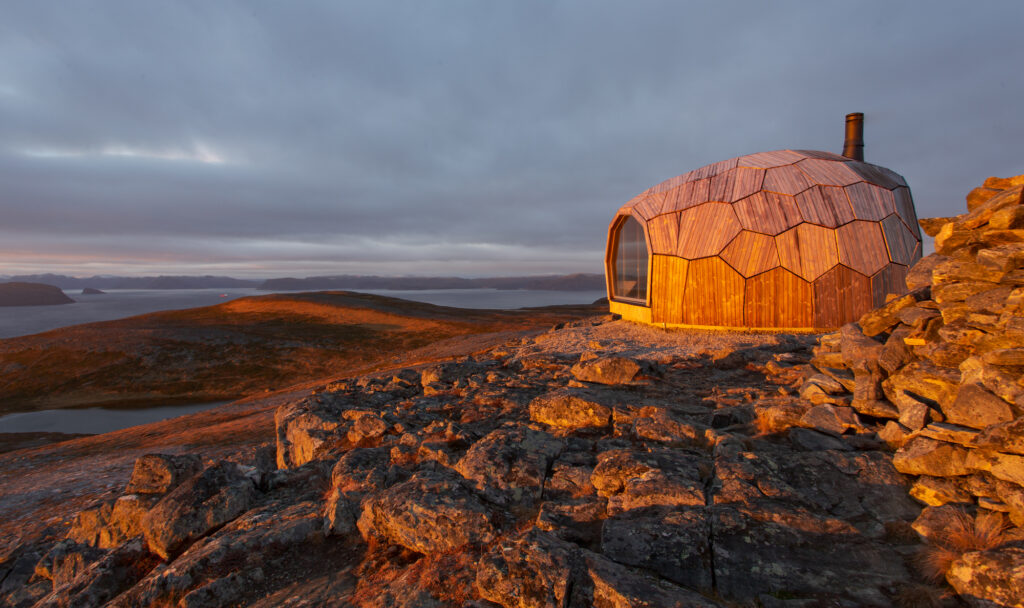
Practicalities include fly-screens, a safe outdoor area for chopping firewood, and covered areas where you can change out of muddy or wet clothes, and even an outdoor bath where you enjoy the view.
Going back to basics with design is a healthy reminder that we actually need very little
Cabin Fever, gestalten
Minimalism may be something we strive for in our everyday lives, but it can be difficult to achieve. A bijou cabin could be the answer. “Going back to basics with design is a healthy reminder that we actually need very little,” Cabin Fever tells us.
“In a modern urbanized world, constantly offering us much more than we need, it is about deciding what to leave out rather than what to put in,” says Jonas Bjerre-Poulsen of Norm. “Finding out what is essential and important is key to steering life in a direction that creates happiness and well-being.”
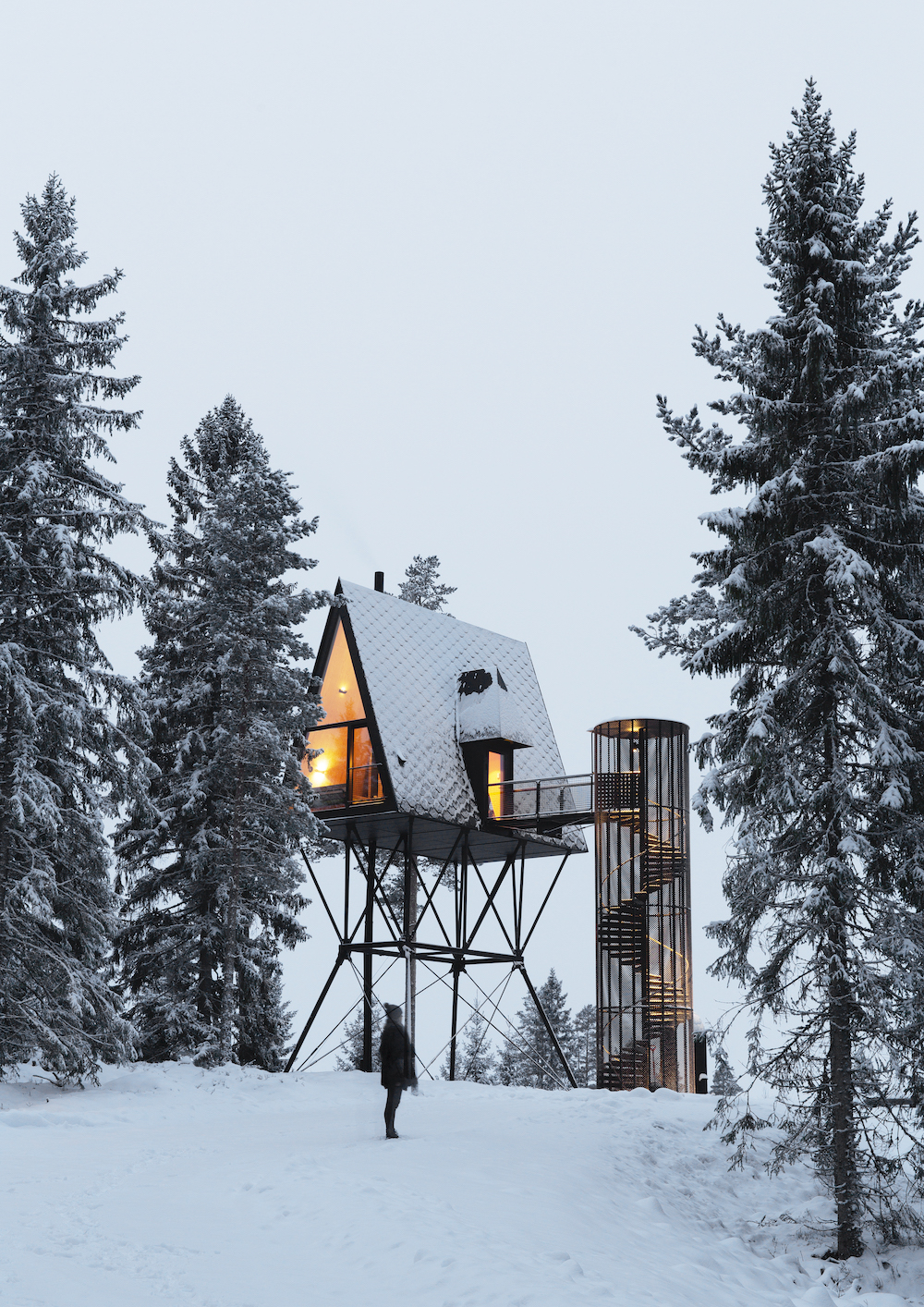
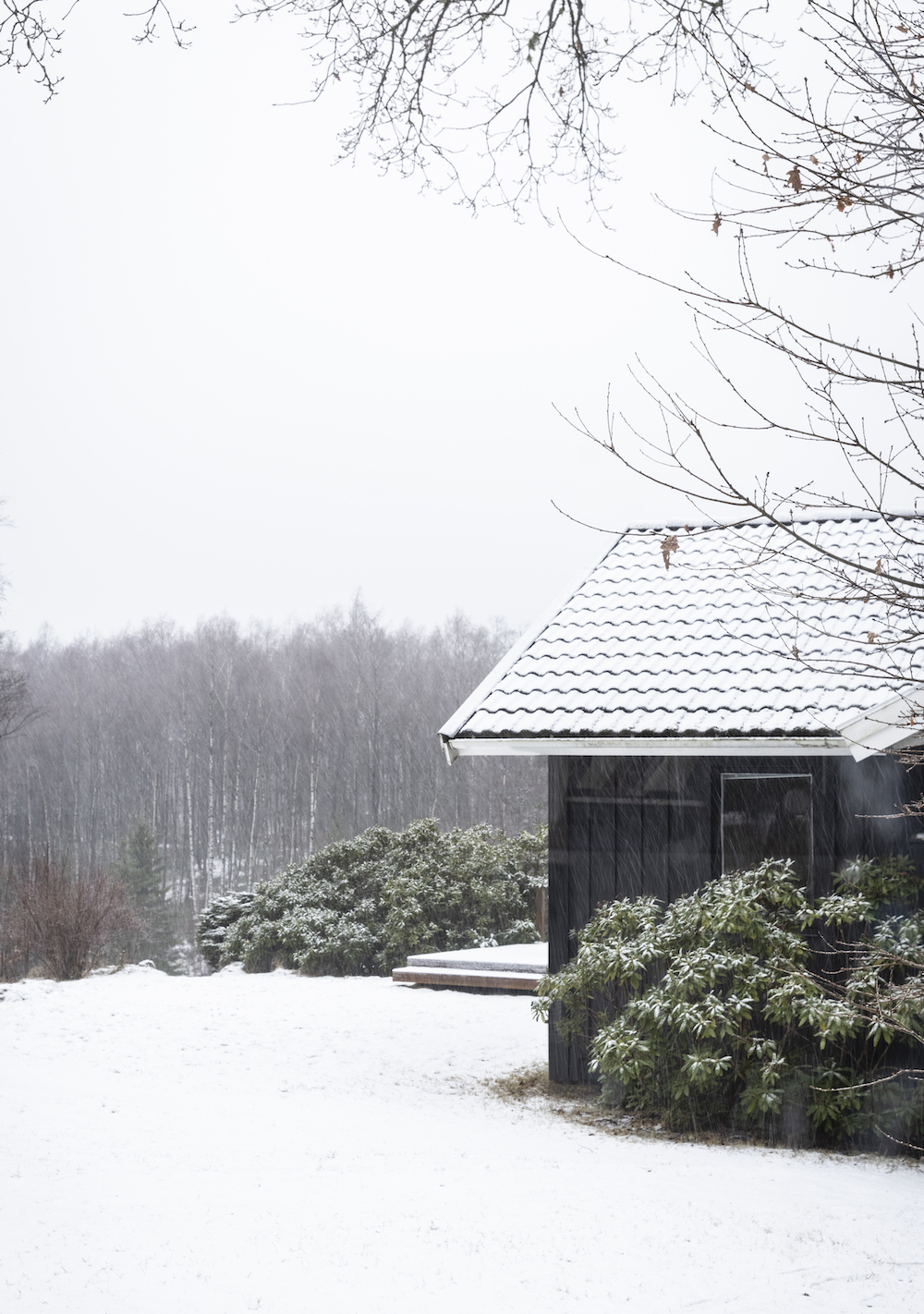
Tricks of the trade include keeping interiors to a few base finishes, so that the space isn’t over-complicated; using warm tones and textiles (think generous cushions, curtains, blankets and rugs), and designing in a higher ceiling with split level or mezzanine to give small spaces a generous feel.
Norm’s Archipelago House displays some of these attributes: Four interlocking double-height volumes. High-end materials inside are in soft greys, natural browns and chalky white; the furniture is of natural wood, the floor is polished concrete; and the shelves are lined with handcrafted ceramics in earthy tones.
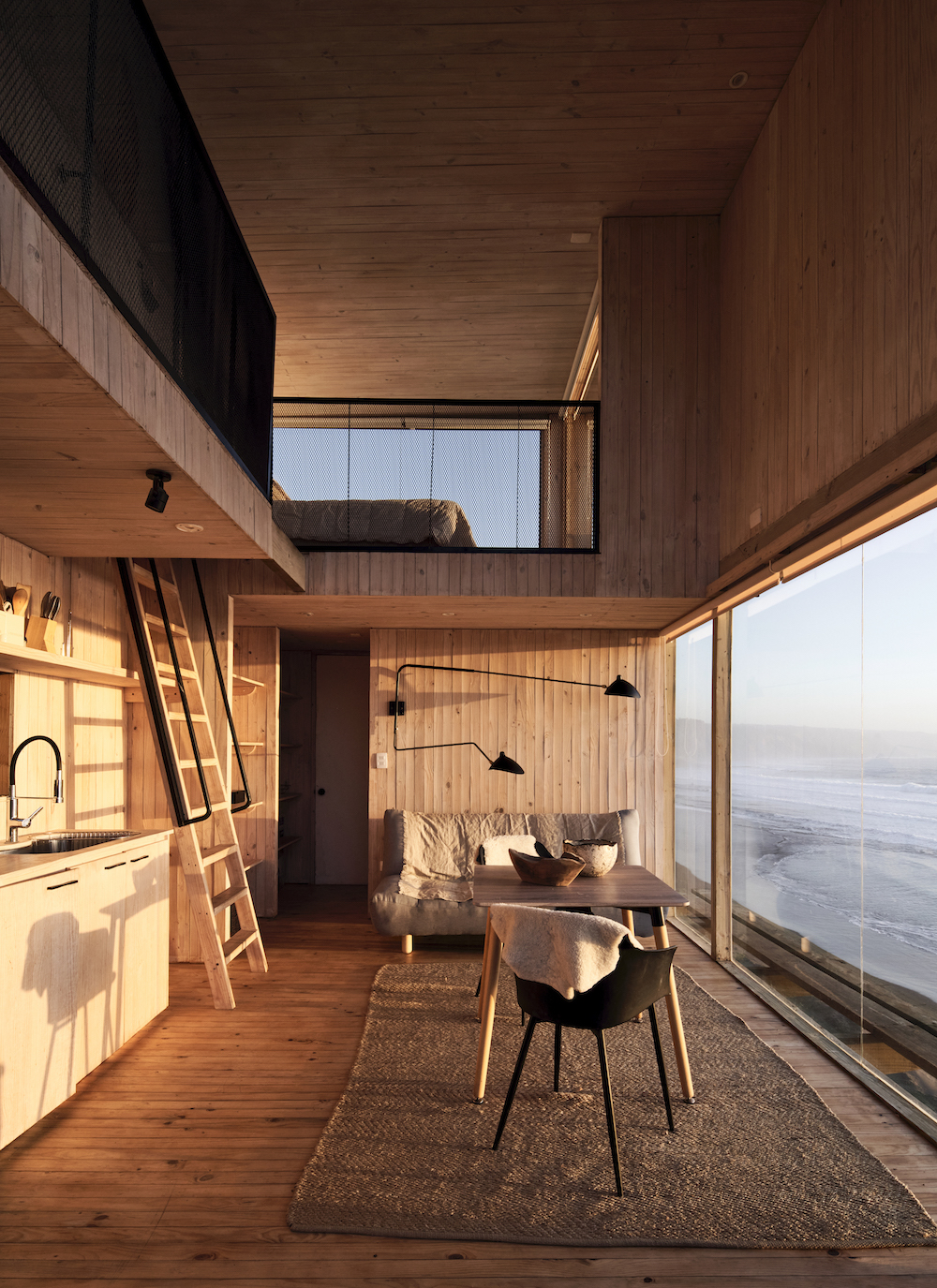
Likewise, on a hillside above Chile’s Pacific Ocean, Croxatto & Opazo Arquitectos have created two cabins, La Loice and La Tagua, with rugged, rustic forms, entirely of timber. The living room is double-height and a vertical ladder leads to master bedroom.
These yearnings for remoteness and seclusion are not the preserve of the 21st century. In 1928, DH Lawrence’s short story The Man Who Loved Islands was published. Around three decades later, Finnish author Tove Jansson – most famous for her Moomin stories – riposted with: “How about the woman who fell in love with an island?” She and her partner, Finnish sculptor Tuulikki Pietilä (known as Tooti), lived on the island of Klovharu for almost 30 years, until the early 1990s. Their life there was so bare-bones that it would make these modern-day cabins look shamefully indulgent. The cottage may have been snug, but there was no electricity or running water and there would have been no getting away from storms.
Like current architects, “Jansson designed the house so that she could see the weather fronts coming in through the windows,” says Alison Williams, co-curator of the exhibition The Woman Who Fell In Love With An Island, held at east London’s Walthamstow Wetlands last year. Norm’s understanding of remote minimalism chimed with Jansson. As Bjerre-Poulsen says: “Surely, the journey towards finding out what is essential in our lives is a delicate balance between the pleasure things and possessions give us and the pleasure of freeing ourselves from them.” Perhaps spending time in a small, secluded, beautifully-designed space is one route to achieving this.
Effect Magazine is brought to you by Effetto



